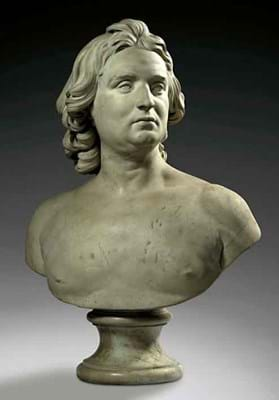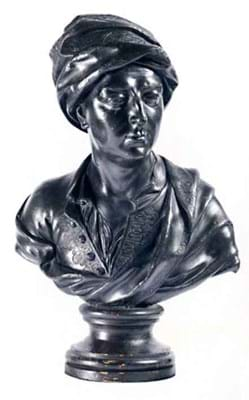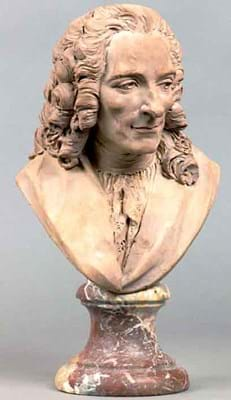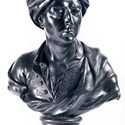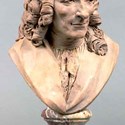Some lots, like the Bouchardon bust sold for€3m (£2.5m), were expected to hit the headlines, but in many cases bidders were prepared to compete strongly for lots that had been less fancied.
In sculptural terms there was no doubt that the most important lot in Paris this summer was the marble portrait bust of Charles Frederic de La Tour du Pin de Bourbon, Marquis de Gouvernet and Governor of Montélimar, sold by Aguttes (25% buyer's premium) on June 11.
Hailed as the masterwork of Edmé Bouchardon (1698-1762), the most celebrated and avant garde sculptor of his time, the 2ft 6in (78cm) high bust had been estimated at €4m. It did not reach that level but confirmed its museum quality nevertheless when it was pre-empted by the Louvre at €3m (£2.5m).
The importance of the piece was evident on a number of levels.
In purely artistic terms the portrait was imposing and lifelike, with a powerful presence. Stylistically it marked a dramatic break with the sculptural traditions established in the court of Louis XIV.
The marquis is depicted à l'antique, bare-chested with his head turned in noble profile. His natural hair is drawn back from his brow and drops in long curls down his neck in marked contrast to the heavy full-bottomed wigs that characterised the high fashion of the Sun King's reign.
Though Bouchardon had experimented with classical style in the 1720s, creating busts for a number of private patrons in Rome during his Italian tour, the depiction of a French nobleman in the antique style was a new departure. The work was commissioned in 1734 and its completion two years later is recorded in Latin on the back of the plinth: EDMUNDUS BOUCHARDON SCULPTOR REGIUS FACIEBAT AD 1736. Its exhibition at the Paris Salon in 1738 sealed the sculptor's reputation.
The bust's subsequent provenance appears to be as impeccable as its origins. Despite the wholesale disruption of society in the late 18th century, which saw the marquis' successors guillotined, legal documents reveal that it left the family for the first time when it appeared at auction this summer.
A terracotta version of this bust of identical size and also dated 1736 is in the Musée Jacquemart-André in Paris.
Voltaire Bust
The avant garde nature of the Bouchardon bust was emphasised by the appearance of another portrait bust at Bondu's (23.92% buyer's premium) sale at Drouot Richelieu on June 29.
Executed more than a decade later, this was a terracotta of Voltaire by Jean-Baptiste Lemoyne (1704-78) which depicted the philosopher very much à la française, in full wig with a lace shirt at the neck. Just 11in (28cm) high, this early and lively depiction of the author of Candide and champion of the Enlightenment sold for nearly four times its estimate at €100,000 (£83,335).
Rigaud in Lead
One of the more speculative lots in the Paris summer series was a 21in (53cm) high bust in lead sold by Fraysse (24% buyer's premium) on June 6. Dated to the early 18th century, it depicted a gentleman in an open-necked shirt wearing a turban.
This relaxed and informal portrait is presumed to have been inspired by the well-known 1698 oil-on-canvas self-portrait of Hyacinthe Rigaud now in the Museum of Perpignan, his home town.
Rigaud was the pre-eminent portrait painter of his time and is best known for his imposing royal portraits, particularly his 1701 oil of Louis XIV, now in the Louvre, but he was also adept with less formal likenesses and the quality of the lead bust combined with its links to the Perpignan self-portrait were enough to tempt bidders.
Despite the lack of any firm attribution it sold for €97,000 (£80,835), having been estimated at just €4000-8000.
Exchange rate: £1 = €1.2

